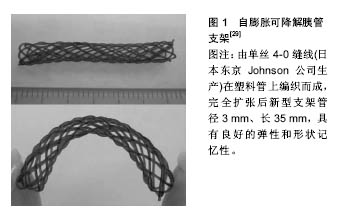| [1]中华医学会外科学分会胰腺外科学组. 慢性胰腺炎诊治指南(2014)[J]. 中华外科杂志, 2015, 14(4):277-282. [2]郑舒丹. 50例慢性胰腺炎患者的临床病例分析与病例对照研究[J]. 医学信息, 2015,(36):301.[3]王洛伟, 李兆申, 李淑德,等. 慢性胰腺炎全国多中心流行病学调查[J]. 中华胰腺病杂志, 2007, 7(1):1-5.[4]朱雨田, 陈和平. 慢性胰腺炎遗传学研究进展[J]. 实用医院临床杂志,2016,13(1):125-127.[5]Talukdar R, Nageshwar Reddy D. Endoscopic therapy for chronic pancreatitis. Curr Opin Gastroenterol. 2014;30(5): 484-489. [6]Clarke B, Slivka A, Tomizawa Y, et al. Endoscopic therapy is effective for patients with chronic pancreatitis. Clin Gastroenterol Hepatol. 2012;10(7):795-802.[7]闫峻, 刘建生. 慢性胰腺炎的外科治疗进展[J]. 中国药物与临床, 2015, 18(8):329-331. [8]杨柳, 张金坤, 周春晓. 治疗性经内镜逆行胰胆管造影在慢性胰腺炎患者中的应用[J]. 临床肝胆病杂志, 2015,31(5): 684-686. [9]Nadkarni NA, Kotwal V, Sarr MG, et al. Disconnected Pancreatic Duct Syndrome: Endoscopic Stent or Surgeon's Knife. Pancreas. 2015;44(1):16-22.[10]文卫, 王敏, 范志宁. 胰管支架留置技术在胆管深插管中的应用[J]. 中国内镜杂志, 2010, 16(9):961-963.[11]Shi QQ, Ning XY, Zhan LL, et al. Placement of prophylactic pancreatic stents to prevent post-endoscopic retrograde cholangiopancreatography pancreatitis in high-risk patients: a meta-analysis. World J Gastroenterol. 2014;20(22):7040- 7048.[12]Kawaguchi Y, Ogawa M, Omata F, et al. Randomized controlled trial of pancreatic stenting to prevent pancreatitis after endoscopic retrograde cholangiopancreatography. World J Gastroenterol. 2012;18(14):1635-1641.[13]钱阳阳, 赵朕华, 廖专,等. ERCP术后胰腺炎的最新研究进展[J]. 中华胰腺病杂志, 2016, 16(3):206-210.[14]周洪, 叶博, 叶萍,等. 内镜下胰管支架置入术治疗胰腺分裂症16例[J]. 上海医学, 2012, 35(12):1047-1049.[15]Qin Z, Linghu EQ. Temporary placement of a fully covered self-expandable metal stent in the pancreatic duct for aiding extraction of large pancreatic duct stones: preliminary data. Eur J Gastroenterol Hepatol. 2014;26(11):1273-1277.[16]Andriulli A, Loperfido S, Napolitano G, et al. Incidence rates of post-ERCP complications: a systematic survey of prospective studies. Am J Gastroenterol. 2007;102(8):1781-1788.[17]Kawaguchi Y, Lin JC, Kawashima Y, et al. Risk factors for migration, fracture, and dislocation of pancreatic stents. Gastroenterol Res Pract. 2015;2015:365457.[18]李秋果. 组织工程支架材料研究进展及发展前景[J]. 长江大学学报:自然科学版, 2012, 9(2):21-25.[19]Ishihara T, Yamaguchi T, Seza K, et al. Efficacy of s-type stents for the treatment of the main pancreatic duct stricture in patients with chronic pancreatitis. Scand J Gastroenterol. 2006;41(6):744-750.[20]Itoi T, Sofuni A, Tsuchiya T, et al. Initial evaluation of a new plastic pancreatic duct stent for endoscopic ultrasonography-guided placement. Endoscopy. 2015; 47(5): 462-465.[21]Boursier J, Quentin V, Le Tallec V, et al. Endoscopic treatment of painful chronic pancreatitis: evaluation of a new flexible multiperforated plastic stent. Gastroenterol Clin Biol. 2008;32(10):801-805.[22]Giacino C, Grandval P, Laugier R. Fully covered self-expanding metal stents for refractory pancreatic duct strictures in chronic pancreatitis. Endoscopy. 2012;44(9): 874-877.[23]Shen Y, Liu M, Chen M, et al. Covered metal stent or multiple plastic stents for refractory pancreatic ductal strictures in chronic pancreatitis: a systematic review. Pancreatology. 2014;14(2):87-90.[24]Park DH, Kim MH, Moon SH, et al. Feasibility and safety of placement of a newly designed, fully covered self-expandable metal stent for refractory benign pancreatic ductal strictures: a pilot study (with video). Gastrointest Endosc. 2008;68(6): 1182-1189.[25]Moon SH, Kim MH, Park DH, et al. Modified fully covered self-expandable metal stents with antimigration features for benign pancreatic-duct strictures in advanced chronic pancreatitis, with a focus on the safety profile and reducing migration. Gastrointest Endosc. 2010;72(1):86-91.[26]Ogura T, Kurisu Y, Yamamoto K, et al. Placement of a novel fully covered metallic stent for refractory pancreatic duct stricture. Endoscopy. 2015;47 Suppl 1 UCTN:E206-207.[27]Lämsä T, Jin H, Mikkonen J, et al. Biocompatibility of a new bioabsorbable radiopaque stent material (BaSO4 containing poly-L,D-lactide) in the rat pancreas. Pancreatology. 2006; 6(4):301-305.[28]Laukkarinen J, Lämsä T, Nordback I, et al. A novel biodegradable pancreatic stent for human pancreatic applications: a preclinical safety study in a large animal model. Gastrointest Endosc. 2008;67(7):1106-1112.[29]Itoi T, Kasuya K, Abe Y, et al. Endoscopic placement of a new short-term biodegradable pancreatic and biliary stent in an animal model: a preliminary feasibility study (with videos).J Hepatobiliary Pancreat Sci. 2011;18(3):463-467.[30]Nordback I, Räty S, Laukkarinen J, et al. A novel radiopaque biodegradable stent for pancreatobiliary applications--the first human phase I trial in the pancreas. Pancreatology. 2012; 12(3):264-271.[31]Cahen DL, Merwe SVD, Poley JW, et al. A Novel Biodegradable Non-Covered Self-Expandable Stent to Treat Pancreatic Duct Strictures in Chronic Pancreatitis; a Pilot Study. Gastrointestinal Endoscopy. 2015; 81(5):AB143- AB144.[32]Rafique A, Mahmood Zia K, Zuber M, et al. Chitosan functionalized poly(vinyl alcohol) for prospects biomedical and industrial applications: A review. Int J Biol Macromol. 2016;87:141-154.[33]Ma F, Chen S, Liu P, et al. Improvement of β-TCP/PLLA biodegradable material by surface modification with stearic acid. Mater Sci Eng C Mater Biol Appl. 2016;62:407-413.[34]Inam Ul Ahad, Bartnik A, Fiedorowicz H, et al. Surface modification of polymers for biocompatibility via exposure to extreme ultraviolet radiation. J Biomed Mater Res A. 2014; 102(9):3298-3310. |
.jpg)


.jpg)